Occupational Safety Training for Operating Dump Trucks
99,000 ₫
Note: The above price is calculated per person and may vary depending on the number of participants and market fluctuations. For more accurate pricing information, please refer to the pricing table or contact our consultants directly.
Occupational safety is a crucial issue when operating dump trucks and must be addressed promptly to ensure the health and safety of workers, as well as to enhance the reputation of enterprises. The Occupational Safety Training course is one of the most effective solutions to raise awareness on preventing workplace accidents for workers operating dump trucks.
Table of Contents
Toggle1. Overview of Dump Trucks
a. What is a Dump Truck?
A dump truck, also known as a dump lorry, is a type of vehicle designed to transport and unload materials such as sand, rocks, soil, and other construction materials. Dump trucks have a cargo bed that can be lifted and emptied quickly to allow fast loading and unloading. This makes dump trucks an essential tool in construction, mining, and other industries that require moving large amounts of material.
Dump trucks come in various sizes and capacities depending on the specific usage. Cargo beds can range from small for light-duty work to large for major construction projects.

b. How Dump Trucks Work
The operation of a dump truck generally involves the following steps:
- Lifting the Cargo Bed: Dump trucks typically have a lifting mechanism at the rear or front. This system usually uses hydraulic cylinders to raise the bed.
- Loading and Transporting Material: Once the bed is raised, materials such as sand, rocks, or soil can be loaded into the dump truck. After the bed is full, the truck transports the load to the designated location.
- Unloading the Material: Upon arrival, the hydraulic system lifts the bed and opens the tailgate. Gravity then causes the material to slide out of the bed and be deposited at the correct location.
- Closing and Lowering the Bed: After unloading, the bed is closed and lowered. The hydraulic system ensures smooth control of this process.
Hydraulic systems are commonly used in dump trucks to provide the necessary power and control for lifting the bed and ensuring that unloading occurs safely and efficiently. Dump trucks can be equipped with various types of engines depending on their size and intended use.

c. Industries That Use Dump Trucks
Dump trucks are widely used in industries that require transporting and handling large volumes of materials. Key industries include:
- Construction: Dump trucks transport and supply construction materials such as sand, rocks, cement, and soil.
- Mining: Mining operations require moving large quantities of soil, rocks, minerals, and other materials from mining sites to processing or export points.
- Agriculture: In some cases, dump trucks are used in agriculture to transport fertilizer, animal feed, or other farm products.
- Waste Management: Dump trucks transport waste from collection points to treatment facilities or landfills.
- Mining and Metal Industry: In these sectors, dump trucks are used for transporting and handling ores and other materials.
- Renewable Energy: For renewable energy projects like wind farms or solar installations, dump trucks move construction materials and equipment to installation sites.
2. Overview of Safety Training for Operating Dump Trucks
a. What is Occupational Safety Training?
- Occupational safety training for operating dump trucks provides workers with awareness and methods to prevent workplace accidents. Workers directly involved with dump trucks belong to Group 3.
- This training helps workers identify hazards and prevent accidents, reducing the risk of workplace incidents.
REGISTER FOR OCCUPATIONAL SAFETY TRAINING
b. Training Duration
Initial Safety Training
- The total training duration is at least 24 hours, including testing.
- 8 hours of theory on policies and labor safety laws
- 8 hours of theory on basic occupational safety knowledge
- 4 hours of theory on specialized training content
- 2 hours of practical exercises on specialized training content
- 2 hours of theoretical final exam
The safety training center will distribute the hours across multiple sessions depending on workers’ schedules. Typically, the course includes 6 sessions over 3 days, assuming the company can arrange continuous training.
Periodic Safety Training
- Before the occupational safety card expires, workers must complete periodic safety training, which lasts at least 50% of the initial training duration.
Explanation: The total duration of periodic safety training is at least 12 hours, including testing. Upon successful completion and passing the exam, workers are reissued or have their occupational safety card renewed.
c. Training Content
| No. | TRAINING CONTENT | TRAINING DURATION (HOURS) | |||
| Total | Including | ||||
| Theory | Practical | Test | |||
| I | Policies and labor safety laws | 8 | 8 | 0 | 0 |
| 1 | Overview of legal documents on occupational safety and hygiene. | 6 | 6 | ||
| 2 | Standards and technical regulations on occupational safety and hygiene. | 1 | 1 | ||
| 3 | Specific regulations from state authorities on occupational safety and hygiene when constructing, expanding, or renovating facilities, as well as using, storing, and inspecting machines, equipment, and hazardous substances. | 1 | 1 | ||
| II | Basic knowledge of occupational safety and hygiene | 8 | 8 | 0 | 0 |
| 1 | Basic knowledge of hazards and harmful factors in the workplace. | 4 | 4 | ||
| 2 | Methods to improve working conditions. | 1 | 1 | ||
| 3 | Safety culture in production and business. | 1 | 1 | ||
| 4 | Rights and obligations of employers and employees; labor safety policies; roles of safety officers. | 1 | 1 | ||
| 5 | Safety rules, signage, use of personal protective equipment; first aid, accident prevention, occupational disease prevention. | 1 | 1 | ||
| III | Specialized training content | 6 | 4 | 2 | 0 |
| Comprehensive knowledge about machines, equipment, hazardous materials; risk analysis and management for occupational safety; safe operating procedures with machines, equipment, and hazardous substances. | 6 | 4 | 2 | ||
| IV | Final Safety Training Test | 2 | 2 | 0 | 0 |
| Total | 24 | 22 | 2 | ||
See more training content for all 6 groups
d. Occupational Safety Card
After completing the safety training course and passing the exam, workers will be issued an occupational safety card (commonly called Group 3 safety certificate).
Group 3 safety cards display personal information, job, workplace, training duration, official stamp, and signature confirming course completion.
According to Article 24, Clause 2 of Decree 44/2016/ND-CP, there are two cases:
- If the worker has an employment contract, the employer must sign and stamp the card after the worker completes the training and passes the exam.
- If the worker is freelance or seasonal without an employment contract, the training center must sign and stamp the card after completion and passing the exam.

3. Hazards When Operating Dump Trucks
Operating a dump truck can involve many hazards due to the nature of the work and the size of these vehicles. Here are some major hazards:
- Risk of tipping over: When fully loaded, dump trucks have a high center of gravity, increasing the risk of tipping, especially on hilly or uneven terrain. Loss of balance can lead to serious accidents.
- Collision risk: Dump trucks often operate in construction sites with many machines and workers. The risk of colliding with other vehicles, workers, or infrastructure is high.
- Safety during unloading: There is a risk of accidents if the unloading process is not carried out properly. Uncontrolled material can fall and endanger nearby people.
- Hydraulic system: The hydraulic system is used to lift and lower the dump body. Any malfunction or degradation may lead to loss of control and accidents.
- Limited visibility: Large dump bodies can restrict the driver’s line of sight, increasing the likelihood of collisions with unintended objects.
- Load management: Overloading or uneven load distribution can create problems for suspension, brakes, and reduce driving performance.
- Work environment: Dump truck drivers often work in harsh environments, which may include dust, noise, and extreme weather conditions.
- Chemical hazards: In some cases, dump trucks may transport materials harmful to health or the environment, increasing the risk of pollution and chemical accidents.

4. Measures to Prevent Occupational Accidents When Operating Dump Trucks
To prevent occupational accidents while operating dump trucks, safety measures and risk management are crucial. Here are some measures organizations and drivers can implement:
- Training and Education:
- Provide comprehensive training for drivers on safe driving techniques, unloading procedures, and safety regulations.
- Ensure all drivers understand the specific hazards and safety measures related to dump truck operation.
- Regular Inspection and Maintenance:
- Conduct regular inspections and maintenance of dump trucks to ensure all systems (including hydraulics) function properly.
- Ensure compliance with load capacity and distribution specifications.
- Safety During Unloading:
- Establish a safe zone around the unloading area to prevent contact with workers or other vehicles.
- Use sensors or cameras to help drivers monitor the unloading process.
- Speed Control:
- Set safe speed limits for dump trucks in construction areas or on specific terrain.
- Controlling speed reduces the risk of loss of control and collisions.
- Fatigue Management:
- Ensure drivers have adequate rest between work cycles to minimize fatigue and improve focus.
- Warning Systems:
- Install warning systems and sensors to alert drivers of potential hazards and help them respond promptly.
- Compliance with Laws and Regulations:
- Adhere to all traffic and occupational safety regulations related to dump truck operation.
- Continuous Communication:
- Maintain open communication between drivers, managers, and work teams to share information on safety and risks.
- Periodic inspection of dump trucks to detect early safety issues such as wear or mechanical failures, thereby reducing the risk of occupational accidents.
5. Benefits of Labor Safety Training
An Toàn Nam Việt provides your business with the following benefits after completing labor safety training courses in accordance with Decree 44/2016/ND-CP on Occupational Safety and Health:
- Workers can recognize potential hazards and take preventive measures to avoid occupational accidents.
- Businesses can establish risk prevention measures in production, operation, and maintenance processes.
- Reduce costs associated with occupational safety incidents.
- Uninterrupted production improves labor productivity and product quality.
- Ensure compliance with labor safety laws and avoid legal risks.
- Enhance credibility and professionalism, boosting the company’s brand value.
Nam Việt’s training courses provide solutions to prevent external risks affecting individuals, helping them avoid hazards that could cause injuries or even fatalities.
REGISTER FOR LABOR SAFETY TRAINING
6. Customer Feedback After Completing Training
An Toàn Nam Việt has years of experience partnering with businesses in Vietnam, especially in the southern provinces. This responsibility is invaluable, which is why our labor safety training programs are increasingly professional. Positive feedback and suggestions from our partners are the driving force behind our growth. Below are testimonials from clients we have served.
See more customer interviews after using our services at An Toàn Nam Việt
7. An Toàn Nam Việt’s Labor Safety Training Capacity
An Toàn Nam Việt is a reputable and high-quality labor safety training center in Vietnam, offering continuous training at factories, workshops, or construction sites nationwide (63 provinces).
REGISTER FOR LABOR SAFETY TRAINING
Labor Safety Training License
- An Toàn Nam Việt has been inspected and certified by the Department of Safety under the Ministry of Labor, Invalids, and Social Affairs to meet the conditions for conducting labor safety training, strengthening our training capacity.

Training Materials and Lectures
- All training materials are reviewed and approved to ensure accurate and effective content.
- Our instructors follow standardized teaching methods developed by An Toàn Nam Việt experts in occupational safety training for maximum knowledge retention.
Facilities
- Control of classroom conditions enhances teaching efficiency and knowledge absorption.
- Our training facilities are spacious, well-lit, and equipped with necessary training equipment.
8. Nationwide Reputable Safety Training Center
At An Toàn Nam Việt, occupational safety training is our top priority. Teaching workers how to protect themselves contributes to building the nation.
We meticulously prepare all training tools, materials, audio, and lighting to ensure effectiveness.
Our instructors are experts with years of experience and research on hazard identification across industries.
Lessons are practical, vivid, and easy to understand, aligning with Decree 44/2016/ND-CP.
Workers learn hazard prevention and self-protection, applying knowledge appropriately in real work scenarios.
Our training center proudly provides professional, reputable labor safety training with advantages:
- Competitive training costs while maintaining quality.
- Flexible training schedules aligned with company production.
- Quick certification procedures compliant with regulations.
- Experienced instructors with many years in the field.
- Controlled classroom conditions for better learning efficiency.
- Lessons tailored to occupational safety in enterprises.
- Dedicated and professional support for clients.

9. Additional Labor Safety Training Materials
- Labor safety materials for dump truck operation
- Complete labor safety training materials
- Labor safety multiple-choice tests
- Multiple-choice tests for dump truck safety
- Dump truck safety training slides
1 review for Occupational Safety Training for Operating Dump Trucks
No comments yet

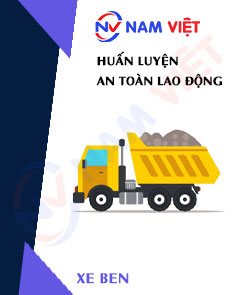
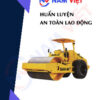






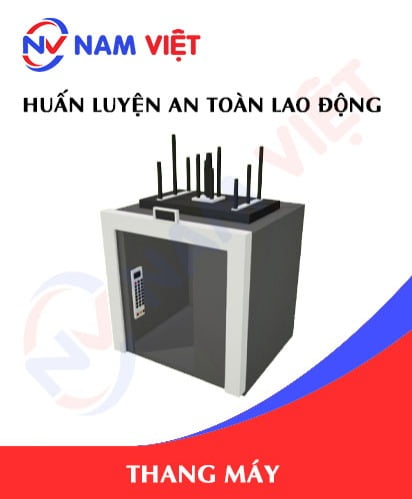


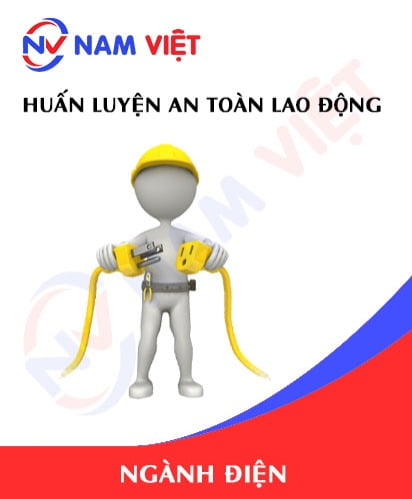

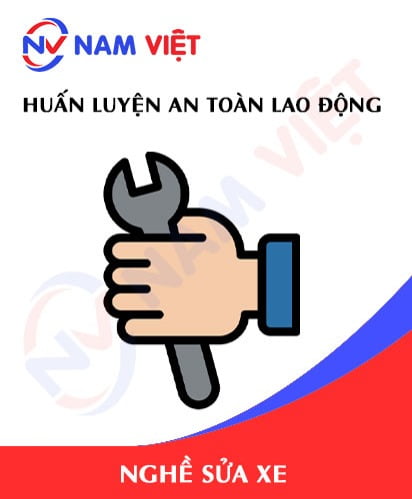
phanminhhang341
The lecturer teaches very lively and easy to understand!